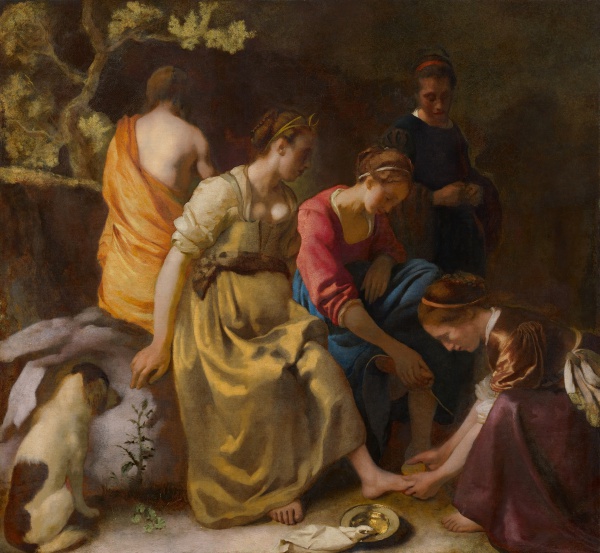Facts About Diana and Her Companions
"Diana and Her Companions" is a captivating painting by the Dutch master Johannes Vermeer, created in the early to mid-1650s. Today, you can admire this masterpiece at the Mauritshuis museum in The Hague. Believed to be one of Vermeer’s earliest surviving works, the painting presents a serene, contemplative scene of the goddess Diana and her attendants, setting it apart from the more dramatic mythological portrayals prevalent at the time.
The painting’s history before the mid-19th century is somewhat enigmatic. It wasn’t widely recognized as a Vermeer until the early 20th century, which adds to its intriguing background.
In the painting, Diana is encircled by four companions. Vermeer’s talent shines through in the delicate way he captures their subtle emotions and interactions. A major restoration effort in 1999-2000 uncovered some interesting alterations, including a blue sky added in the 19th century that was not part of the original composition. Vermeer’s meticulous attention to detail and his masterful use of shadow to create depth and mood are evident throughout the piece.
Art historians have often remarked on Vermeer’s unique interpretation of Diana. He diverged from the usual mythological portrayals, opting instead for a scene imbued with solemnity and hints of Christian symbolism, such as the act of foot-washing. This nuanced approach has sparked considerable critical discussion. Vermeer’s use of light, color, and composition in this painting also reflects the influence of other great artists, particularly Rembrandt.
There has been ample debate about the painting’s attribution and its relation to Vermeer’s other works, with many noting similarities to Rembrandt’s style. The painting’s significance in Vermeer’s career, along with its journey through various owners and exhibitions, offers valuable insights into its historical context and how it has been received over time.
Despite suffering from multiple cleanings and restorations that have left it in less-than-ideal condition, "Diana and Her Companions" remains a vital piece of Vermeer’s legacy. It beautifully showcases his early talent and the beginnings of his evolving artistic style.

 Belgium
Belgium